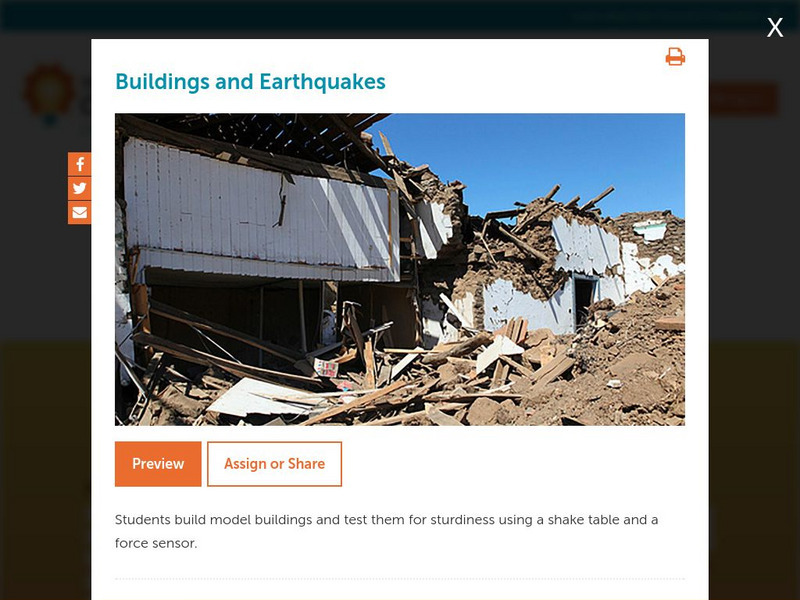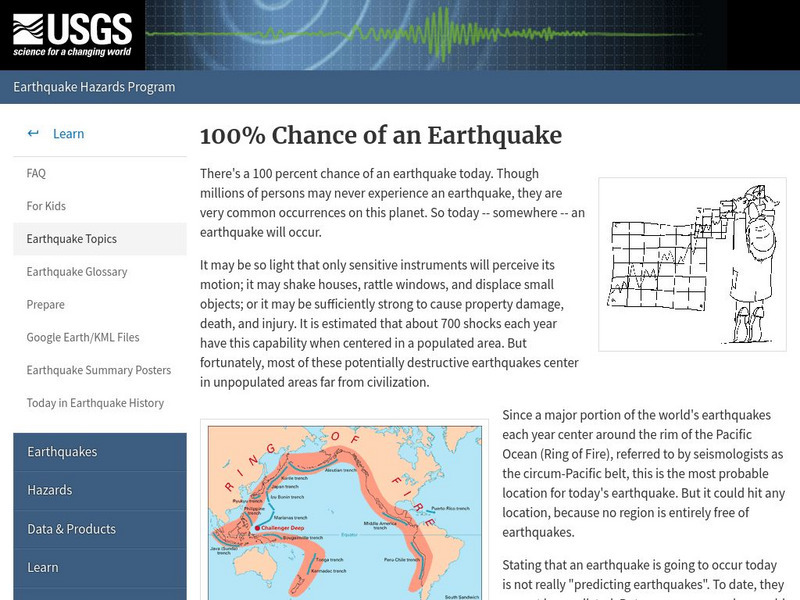TeachEngineering
Teach Engineering: Survive That Tsunami!
Students use a table-top-sized tsunami generator to observe the formation and devastation of a tsunami. They see how a tsunami moves across the ocean and what happens when it reaches the continental shelf. Students make villages of model...
Other
Tech Museum: Building for the Big One [Pdf]
This resource presents a project where students design and build structures that can withstand an earthquake. The project can include an extension where students look at the factors of soil type and proximity to fault in their design....
US Geological Survey
Usgs: Comprehensive Monitoring Provides Timely Warnings of Volcano Reawakening
View near-real-time volcano monitoring data using the Find a U.S. Volcano menu above.
Concord Consortium
Concord Consortium: Stem Resources: Buildings and Earthquakes
Do you think you can build a house that can withstand the shaking from an earthquake? In this activity, students design and construct model building that will be tested on a shake table with a force sensor. Activity includes questions...
TeachEngineering
Teach Engineering: Volcanic Panic!
Students learn about the causes, composition and types of volcanoes. They begin with an overview of the Earth's interior and how volcanoes form. Once students know about how a volcano functions, they learn how engineers predict...
TeachEngineering
Teach Engineering: Water, Water Everywhere
Students learn about floods, discovering that different types of floods occur from different water sources, but primarily from heavy rainfall. While floods occur naturally and have benefits such as creating fertile farmland, students...
BBC
Bbc Bitesize: Monitoring Volcanoes
Composite and shield volcanoes are found along plate margins. They have distinctive characteristics and can have both positive and negative effects on people and the landscape.
Better Lesson
Better Lesson: Building an Earthquake Resistant Structure
How can you use the engineering design process to build a structure that can stand up to an earthquake?
The Wonder of Science
The Wonder of Science: 4 Ess3 2: Natural Hazard Design Solution
Work samples, phenomena, assessment templates, and videos that directly address standard 4-ESS3-2: natural hazard design solution.
Better Lesson
Better Lesson: Protect My Home!
Young scholars create a model using materials to build a barrier or protective wall to prevent your home from flooding during a storm surge.
University of Wisconsin
Scien Count Ers: Earthquake Proof Buildings
This instructional activity looks at how the forces of an earthquake impact on buildings, and different ways to make buildings earthquake-proof. Includes student worksheet and tectonic plates map.
US Geological Survey
U.s. Geological Survey: 100 Percent Chance of an Earthquake
Did you know there is an earthquake somewhere on Earth every day? Read about this very common Earth event.



![Tech Museum: Building for the Big One [Pdf] Lesson Plan Tech Museum: Building for the Big One [Pdf] Lesson Plan](http://content.lessonplanet.com/resources/thumbnails/411264/large/bwluav9tywdpy2symdiwmduymc0xmdm2my0xd3vtenpxlmpwzw.jpg?1589993199)









